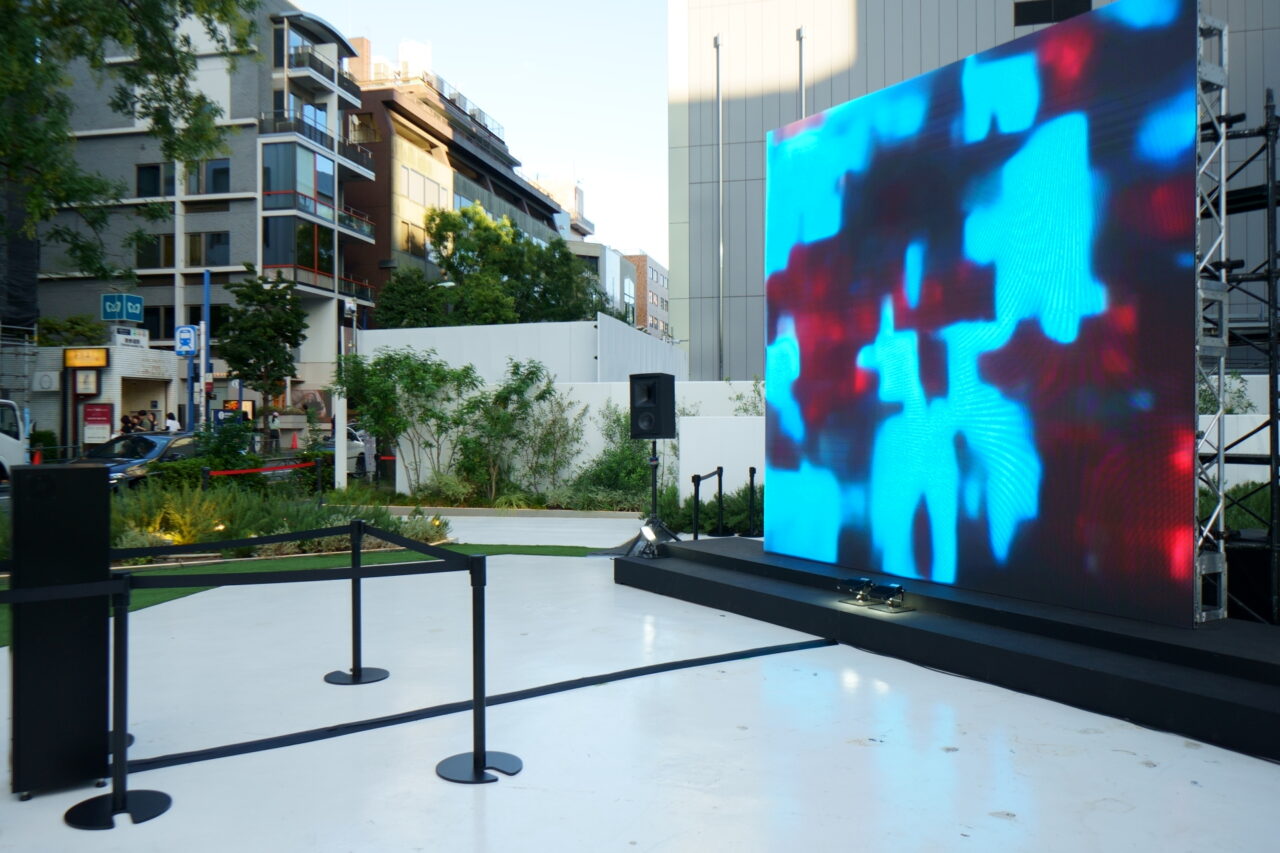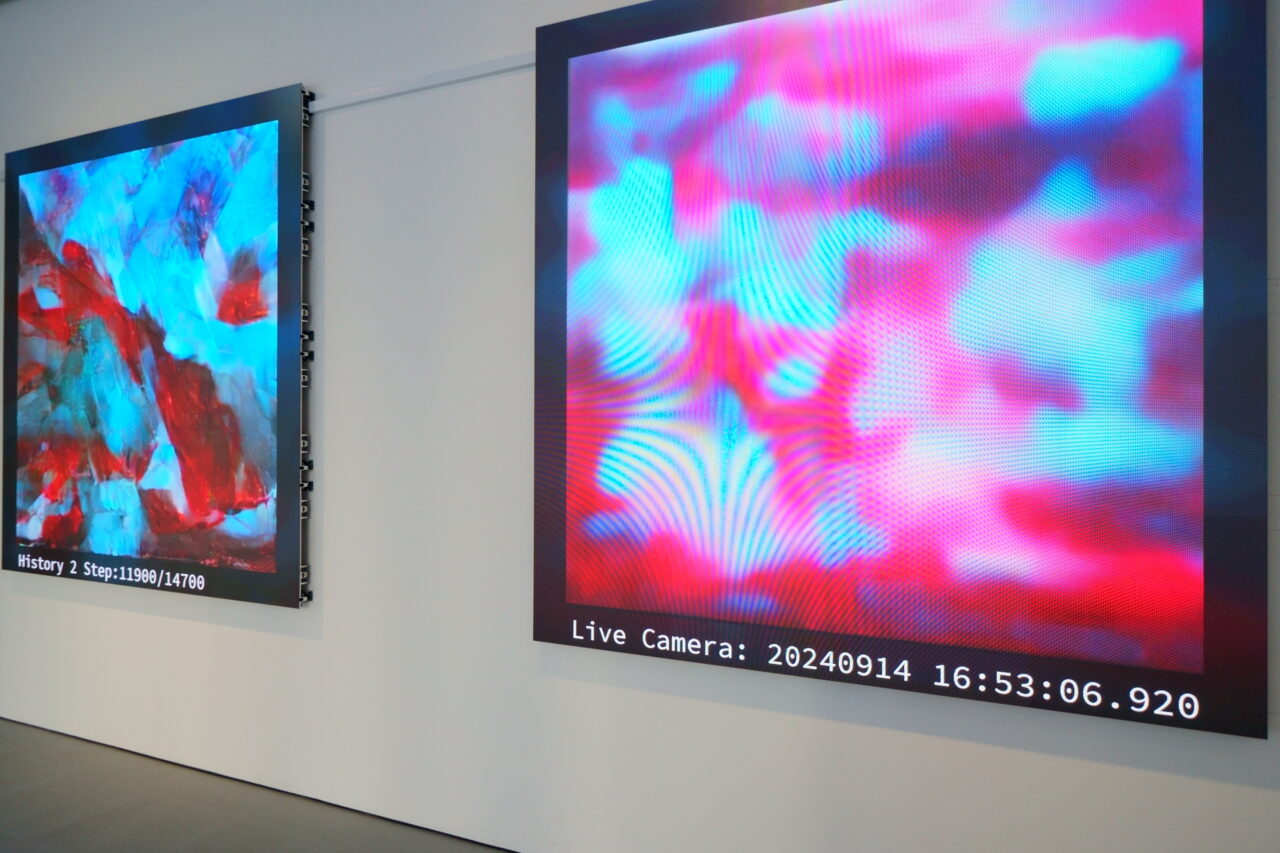INDEX
“recursive”: An Effort to Prevent AI Collapse
Now that we have learned about Rhizomatiks’ purebred image-generating AI, let’s move on to discussing the new work, “recursive.”
“recursive” is an attempt to utilize the previously mentioned AI while allowing real-world people and landscapes to intervene in a spontaneous manner. This work is not merely for observation; it invites interaction.

As music plays, the works generated by Rhizomatiks’ AI are displayed on a large outdoor LED screen. A live camera is positioned in front of the LED screen (on the left side of the photo). While continuously taking selfies of its generated images, the AI keeps learning. The title “recursive” reflects ideas of recursion, circularity, and self-reference, which is where the concept becomes intriguing.
Recent studies indicate that “when an AI learns from images it has created, that model is likely to collapse.” Here, collapse doesn’t imply the AI stops working or can no longer produce images; rather, it signifies that the generated images drift further from real-world data, resulting in diminished quality that undermines their status as genuine art. AI-generated images often show discrepancies with reality, revealing distinctive quirks, particularly in color contrasts. Training AI on its own creations can exacerbate these quirks, leading to degeneration—akin to self-poisoning.
Listening to this, I felt an unexpected connection with AI for the first time. I get it; it’s a challenge! This is why it’s crucial to introduce new team members and make adjustments. Stagnant water becomes foul. The feeling of one’s ego (quirks) inflating in a closed environment is surprisingly relatable and evokes empathy.

This is where the real world comes into play. Passersby can freely stand in front of the live camera, and the changing natural light or raindrops can influence the lens, introducing unpredictable external elements into the data that the AI learns from. This attempt aims to prevent the collapse of the generated images.
























